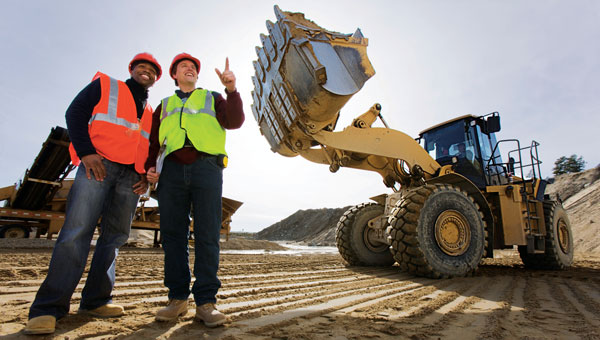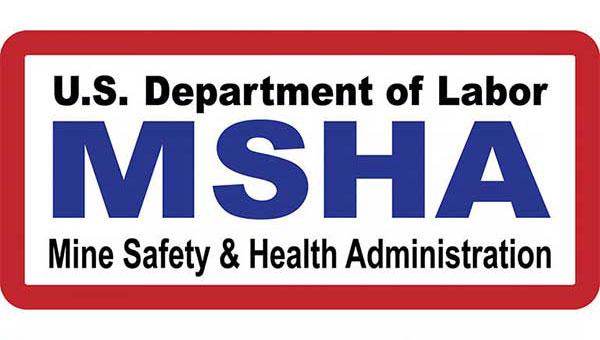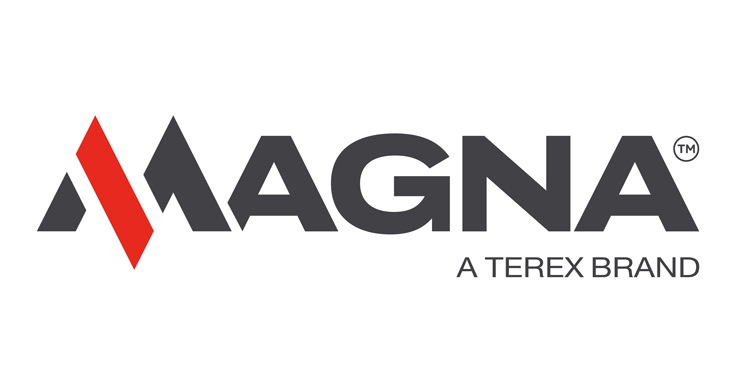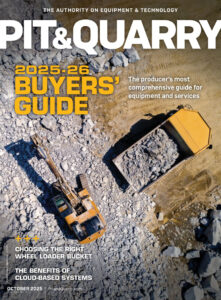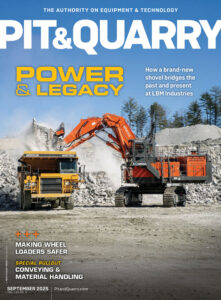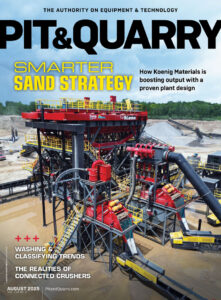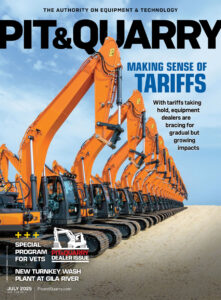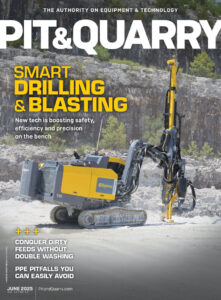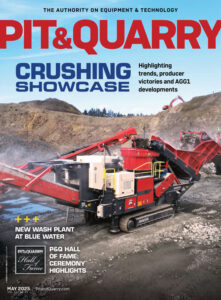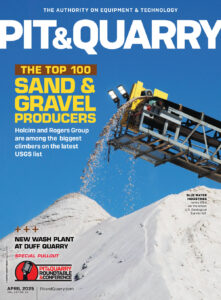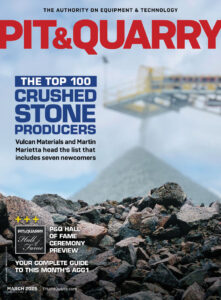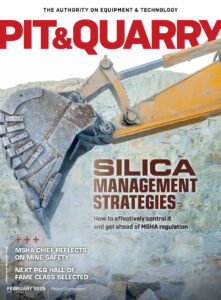Aerial lifts, skid steers, loaders, forklifts, haul trucks, pickup trucks, water trucks and, in some cases, even trains.
It’s hard to imagine a pit or quarry functioning without mobile equipment. There is a slew of compliance items that go along with each piece of equipment, but for now, we will go over some of the fundamental concerns to ensure our teams get home safely every day.
Accessing mobile equipment
Getting on and off equipment will always be a safety concern. To get from the ground to the cab usually requires going up fixed ladders or stairs that manufacturers have built into the equipment. It seems like common sense, but it’s important to train people how to get onto the pieces of mobile equipment they are using.

One company I supported in the past experienced about one-third of its injuries while accessing or getting off mobile equipment. Their solution was to train on three points of contact twice a year, mark where handholds should be, use grip tape and even measure the forces upon the knee so they could reduce them.
This approach drastically reduced injuries caused by accessing mobile equipment.
Being seen
Mobile equipment operators may have limited visibility. Blind spots are common, and you want to ensure you are visible if you are on ground level.
Here are some tips to consider:
• Avoid working around active moving equipment
• Mobile equipment operators have the right of way
• If working around active moving equipment, be seen
• Don’t assume the operator sees you – make eye contact
• Wear high-visibility clothing – retroreflective clothing is the most visible
Before operating mobile equipment
One of the frequent citations issued by the Mine Safety & Health Administration (MSHA) is for operating mobile equipment (or leaving it in service) when deficiencies exist.
Before using any piece of equipment, it’s your responsibility to ensure it’s in good working condition and safe to use. Here are some things to look for:
• Make sure you are trained and authorized to use the mobile equipment
• Perform an appropriate inspection prior to use
• If a fire extinguisher should be present, make sure it is in the designated spot and within its extension window
• Make sure everything functions as it should, and no operational deficiencies exist
If something isn’t right, don’t use the equipment. To avoid MSHA citations, tag equipment as “out of service” until the deficiencies are addressed.
While using mobile equipment
Once you ensure the mobile equipment is safe for use, here are a few tips to keep you and your coworkers safe:
• See the big picture
• Keep your eyes moving. Know your surroundings. Stop moving if you lose sight of people or objects around you. Get out and look around as much as needed
• Wear your seatbelt (or fall protection, if in an aerial lift)
• You are much safer contained within a cab than not
• Use a spotter if needed
• If you are navigating tight spaces or you have limited visibility, get a spotter
• If near overhead electrical wires, you want to use a spotter to ensure you maintain sufficient distance from conductors (at least 10 ft. of clearance for distribution electrical wires; more clearance may be required if large transmission wires are on your site – 13 ft. for 115 kv, 20 ft. for 345 kv)
• Pay attention to soil stability and angle of operation, and remain within tolerances
Some questions to consider: Is your team wearing high-visibility clothing when near mobile equipment? Is your mobile equipment inspection process tight?
Also, do you take equipment out of service when deficiencies are noted? Do your team, visitors and contractors know that mobile equipment has the right of way?
Thoughtful and sensible operation will keep you and your team safe.
Stay safe, and please send any pictures or questions to steve@stevefullercompany.com. Questions are welcome, too.
Steve Fuller has worked over the past 20-plus years with a variety of industries – including aggregates – in operational and safety leadership roles. Now representing Steve Fuller Company, he can be reached at steve@stevefullercompany.com.

